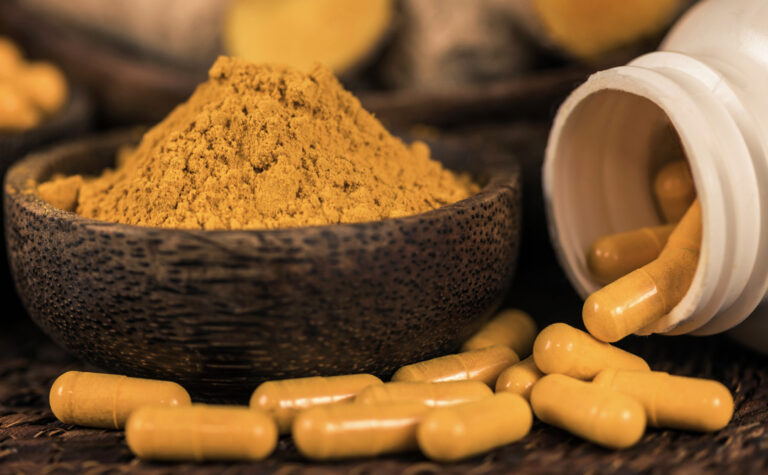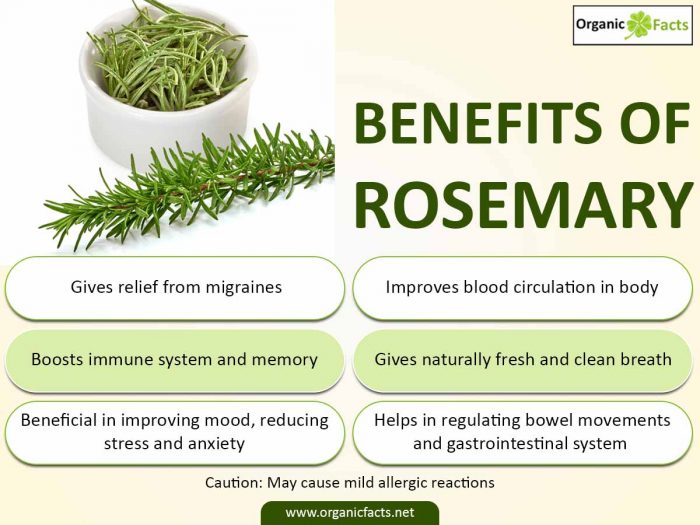A Shield Against Disease: Rosemary’s Role in Cellular Health
In the tapestry of human history, the quest for vitality and resilience against the relentless march of disease is a thread woven through every culture, every era. From the ancient alchemists seeking elixirs of immortality to modern scientists decoding the intricacies of the human genome, the yearning to understand and harness the forces of nature for health has been a constant. Amidst this grand narrative, some of nature’s most potent guardians often stand quietly, their powers acknowledged in folklore and tradition, yet only now truly illuminated by the discerning eye of science. Among these verdant sentinels, one herb, in particular, emerges as a formidable champion for cellular health: rosemary.
For centuries, Rosmarinus officinalis, the fragrant, evergreen shrub with its needle-like leaves and delicate blue flowers, has been a symbol of remembrance, love, and purification. Its aromatic presence has graced gardens, kitchens, and apothecaries across the globe, whispered about in tales of memory enhancement and used in ancient rituals to ward off evil. Yet, beneath its unassuming façade and intoxicating scent lies a sophisticated arsenal of bioactive compounds, meticulously crafted by nature, capable of orchestrating a symphony of protective actions at the very bedrock of our existence: the cell. This is the story of rosemary, not merely as a culinary delight or a fragrant adornment, but as a profound shield against disease, diligently safeguarding the cellular commonwealth that dictates our health and longevity.
Rosemary Through the Ages: A Legacy of Healing Wisdom
The lineage of rosemary’s medicinal use stretches back millennia, deeply embedded in the annals of human civilization. The ancient Egyptians recognized its preservative qualities, often placing sprigs in tombs to accompany the departed, perhaps believing in its power to preserve the spirit, just as it did physical matter. The Greeks and Romans, however, truly championed its therapeutic virtues. Greek scholars would wear rosemary garlands during examinations, convinced it enhanced memory and mental clarity – a belief so enduring that it birthed the very name "rosemary," often mistakenly linked to "rose of Mary," but more accurately derived from the Latin ros marinus, meaning "dew of the sea," a poetic nod to its coastal origins.
Dioscorides, the celebrated Greek physician of the 1st century AD, meticulously documented rosemary’s uses in his seminal work De Materia Medica, prescribing it for digestive ailments, headaches, and as an emmenagogue. Pliny the Elder, a Roman naturalist, also lauded its medicinal properties, emphasizing its carminative and stimulating effects. Throughout the Roman Empire, rosemary became an indispensable herb, integrated into daily life for both its culinary and curative attributes, its presence signifying health and good fortune.
As empires waned and new epochs dawned, rosemary’s stature remained undiminished. In the Middle Ages, amidst the terrifying specter of plagues and rampant infections, rosemary was revered as a powerful antiseptic and purifying agent. It was burned in sickrooms, scattered on floors, and brewed into potent tinctures, believed to cleanse the air and repel contagion. Its use extended to treating various internal ailments, from coughs and colds to liver complaints and rheumatic pains. Herbalists and apothecaries of the era considered it a panacea, a robust defender against the myriad afflictions that plagued humanity. The renowned "Hungary Water," an early form of distilled alcohol infused with rosemary and other herbs, was famously credited with restoring the youth and vigor of Queen Elisabeth of Hungary in the 14th century, solidifying rosemary’s reputation as an elixir of longevity.
Across continents, traditional medicine systems, though not always explicitly naming "rosemary" in their canonical texts, often incorporated similar aromatic plants with overlapping chemical profiles and therapeutic actions, reflecting a universal recognition of nature’s healing potential. The common thread in all these historical accounts is a profound intuition about rosemary’s protective qualities – an intuition that modern science is now validating with remarkable precision, peeling back the layers of tradition to reveal the intricate molecular mechanisms at play.
The Chemical Arsenal: Unveiling Rosemary’s Potency
The captivating aroma and enduring medicinal legacy of rosemary are not mere happenstance; they are the direct consequence of a sophisticated biochemical factory humming within its leaves. Far from being a simple herb, rosemary is a complex matrix of hundreds of bioactive compounds, each playing a role in its overall therapeutic profile. However, a few key players stand out, forming the vanguard of its cellular defense.
At the forefront of rosemary’s protective power are a group of diterpenes, particularly carnosic acid and its oxidized derivative, carnosol. These phenolic compounds, concentrated in the plant’s leaves, are often considered the primary architects of rosemary’s profound antioxidant and anti-inflammatory capabilities. Carnosic acid, a pale yellow, crystalline solid, is remarkably stable and highly lipophilic, allowing it to readily integrate into cell membranes, where it can exert its protective effects directly. Its conversion to carnosol, which also possesses significant bioactivity, further extends its beneficial reach. The scientific community has devoted considerable attention to these two compounds, recognizing them as powerful natural agents with immense pharmaceutical potential.
Another crucial component is rosmarinic acid, a caffeic acid ester and a potent polyphenol. Unlike carnosic acid and carnosol, rosmarinic acid is hydrophilic, meaning it readily dissolves in water, allowing it to function effectively in the aqueous environments within and around cells. It is found in abundance not only in rosemary but also in other Lamiaceae family members like basil, mint, and sage, contributing significantly to their antioxidant and anti-inflammatory properties. Rosmarinic acid acts swiftly, scavenging free radicals and modulating immune responses, offering a complementary layer of protection to the diterpenes.
Beyond these heavy hitters, rosemary’s essential oil, responsible for its characteristic fragrance, is a treasure trove of volatile organic compounds. Key among them are 1,8-cineole (eucalyptol), alpha-pinene, and camphor. While often associated with aromatherapy and respiratory benefits, these volatile compounds also contribute to rosemary’s broader medicinal profile, exhibiting antimicrobial, anti-inflammatory, and even some antioxidant effects. Alpha-pinene, for instance, has demonstrated neuroprotective properties and the ability to modulate inflammation.
Completing this biochemical ensemble are various flavonoids (like luteolin and genkwanin), triterpenes (such as ursolic acid and oleanolic acid), and other phenolic compounds. While present in smaller quantities, these supporting actors contribute to the synergistic effect, enhancing the overall efficacy of the primary compounds. It is this intricate interplay, this natural symphony of diverse molecules, that elevates rosemary from a mere spice to a sophisticated cellular guardian. The true magic of rosemary lies not in any single compound, but in the harmonious collaboration of its entire chemical arsenal, creating a comprehensive shield against cellular damage and disease.
The Cellular Battlefield: Understanding Disease at a Micro Level
To truly appreciate rosemary’s role as a shield, one must first understand the threats it combats. Our bodies are intricate ecosystems of trillions of cells, each a miniature world performing vital functions. The health of these individual cells is paramount, for their collective well-being dictates the health of tissues, organs, and ultimately, the entire organism. Disease, at its core, often begins as a disruption at the cellular level, a breakdown in the delicate balance that sustains life.
One of the most insidious and pervasive threats is oxidative stress. This occurs when there is an imbalance between the production of reactive oxygen species (ROS), commonly known as free radicals, and the body’s ability to neutralize them. Free radicals are highly unstable molecules with unpaired electrons, desperately seeking to steal electrons from other molecules, thereby damaging them. This "oxidative damage" can wreak havoc on all cellular components:
- DNA: Leading to mutations, which are the precursor to cancer.
- Proteins: Impairing enzyme function, structural integrity, and cellular signaling.
- Lipids: Particularly those in cell membranes, leading to lipid peroxidation, compromising membrane fluidity and integrity.
Oxidative stress is a fundamental driver of aging and is implicated in the pathogenesis of virtually every chronic disease, including cardiovascular disease, neurodegenerative disorders like Alzheimer’s and Parkinson’s, diabetes, and cancer.
Another critical threat is inflammation. While acute inflammation is a vital, protective response to injury or infection, chronic, low-grade inflammation is a silent saboteur. When the immune system remains perpetually "on alert," it releases a cascade of pro-inflammatory mediators (cytokines, chemokines, prostaglandins) that, over time, begin to damage healthy tissues. This persistent cellular "fire" contributes to a vast array of conditions, from autoimmune diseases and arthritis to atherosclerosis, metabolic syndrome, and even cancer progression. The NF-kB pathway, a master regulator of inflammatory gene expression, often stands at the nexus of this destructive process.
Beyond these, other cellular threats include:
- DNA Damage: Beyond oxidative stress, environmental toxins, radiation, and even errors during replication can damage the genome, leading to dysfunctional cells or uncontrolled proliferation.
- Mitochondrial Dysfunction: Mitochondria, the powerhouses of the cell, are highly susceptible to damage. When they falter, energy production declines, and cells become vulnerable to dysfunction and premature death. This is a key factor in aging and many degenerative diseases.
- Uncontrolled Apoptosis: While programmed cell death (apoptosis) is essential for removing damaged or unwanted cells, its dysregulation can contribute to disease. Too little apoptosis can lead to cancer, while too much can cause neurodegeneration or autoimmune conditions.
These cellular insults are not isolated events; they often interact and amplify each other, creating a vicious cycle that erodes cellular health and paves the way for overt disease. It is against this backdrop of microscopic warfare that rosemary emerges, not as a blunt instrument, but as a sophisticated, multi-faceted defender, employing a range of strategies to restore balance and protect the cellular kingdom.
Rosemary’s Multi-Layered Defense: Mechanisms of Action
Rosemary’s true genius lies in its ability to engage in a multi-pronged defense, targeting several critical pathways of cellular dysfunction simultaneously. Its bioactive compounds act like highly trained specialists, each with a specific role, yet all working in concert to fortify the cellular shield.
A. The Antioxidant Powerhouse: Quenching the Flames of Oxidation
The most widely recognized and extensively studied aspect of rosemary’s protective profile is its extraordinary antioxidant capacity. Carnosic acid, carnosol, and rosmarinic acid are exceptionally potent free radical scavengers. Imagine these molecules as tiny, selfless heroes, diving in front of dangerous free radicals, neutralizing them before they can inflict damage on vital cellular structures. They directly donate electrons to stabilize reactive oxygen and nitrogen species, effectively disarming these molecular aggressors.
However, rosemary’s antioxidant prowess extends far beyond direct scavenging. It acts as a masterful orchestrator of the cell’s intrinsic defense systems. Crucially, rosemary compounds, particularly carnosic acid, are powerful activators of the Nrf2 (Nuclear factor erythroid 2-related factor 2) pathway. Nrf2 is often referred to as the "master regulator of antioxidant response." When activated, Nrf2 translocates to the cell nucleus and binds to antioxidant response elements (AREs) in the DNA, initiating the transcription of a battery of genes encoding endogenous antioxidant enzymes. These include:
- Superoxide Dismutase (SOD): Converts superoxide radicals into less harmful hydrogen peroxide.
- Catalase (CAT): Breaks down hydrogen peroxide into water and oxygen.
- Glutathione Reductase (GR) and Heme Oxygenase-1 (HO-1): Involved in the glutathione system, the body’s primary endogenous antioxidant defense.
By upregulating these internal defense mechanisms, rosemary doesn’t just provide external antioxidants; it empowers the cells to produce their own, creating a more sustainable and robust protective shield. This dual action – direct radical scavenging and enhancement of endogenous antioxidant enzymes – makes rosemary an exceptionally effective weapon against oxidative stress, protecting DNA, proteins, and lipids from damage and thereby mitigating the risk of numerous chronic diseases. Studies have shown rosemary extracts to significantly reduce lipid peroxidation in various tissues, safeguarding cell membrane integrity and function.
B. Taming the Flames: Anti-inflammatory Action
Chronic inflammation is a silent fire, smoldering within our bodies and fueling a myriad of diseases. Rosemary’s compounds are adept at extinguishing these cellular infernos, modulating inflammatory pathways with remarkable precision. The key mechanism involves the inhibition of the NF-kB (Nuclear Factor-kappa B) pathway. NF-kB is a protein complex that acts as a central switch, turning on genes responsible for producing a vast array of pro-inflammatory mediators. When cells are under stress, NF-kB is activated, triggering an inflammatory cascade.
Carnosic acid and carnosol have been shown to directly inhibit NF-kB activation, preventing it from entering the nucleus and initiating the transcription of inflammatory genes. This effectively dampens the production of crucial pro-inflammatory cytokines such as:
- Tumor Necrosis Factor-alpha (TNF-alpha)
- Interleukin-6 (IL-6)
- Interleukin-1 beta (IL-1β)
Furthermore, rosemary compounds can inhibit the activity of enzymes involved in inflammation, such as COX-2 (cyclooxygenase-2) and iNOS (inducible nitric oxide synthase). COX-2 is responsible for the production of prostaglandins, which are key mediators of pain and inflammation, while iNOS produces nitric oxide, an inflammatory signaling molecule. By suppressing these enzymes, rosemary helps to reduce the overall inflammatory burden on the body.
This anti-inflammatory prowess makes rosemary a valuable ally in conditions ranging from arthritis and inflammatory bowel disease to cardiovascular disease, where chronic inflammation plays a significant role in plaque formation and arterial damage. Imagine rosemary as a wise diplomat, calming agitated cellular responses and preventing the escalation of conflict into destructive warfare.
C. Guardians of the Genome: Anti-mutagenic and Chemopreventive Effects
Perhaps one of rosemary’s most compelling roles is its capacity to act as a guardian of the genome, offering significant chemopreventive and anti-cancer properties. Cancer often originates from unchecked cellular proliferation driven by DNA mutations and a failure of normal regulatory mechanisms. Rosemary intervenes at multiple stages of carcinogenesis:
- Anti-mutagenic Activity: By neutralizing free radicals and carcinogens, rosemary compounds help prevent DNA damage in the first place, reducing the likelihood of mutations that can initiate cancer. They can also enhance the activity of phase II detoxification enzymes (like glutathione S-transferases), which help eliminate harmful chemicals from the body.
- Cell Cycle Arrest and Apoptosis Induction: In cells that have already become abnormal or cancerous, rosemary extracts, particularly carnosic acid and carnosol, can induce cell cycle arrest, stopping these rogue cells from dividing uncontrollably. More remarkably, they can selectively induce apoptosis (programmed cell death) in cancer cells, without harming healthy cells. This selective targeting is a hallmark of an ideal chemotherapeutic agent, allowing the body to clear out cancerous cells before they can form tumors.
- Anti-Angiogenesis: Tumors require a blood supply to grow and metastasize. Rosemary compounds have been shown to inhibit angiogenesis, the formation of new blood vessels, thereby starving tumors of nutrients and oxygen, effectively hindering their growth and spread.
- Anti-Proliferative Effects: Beyond inducing apoptosis, rosemary can directly inhibit the proliferation of various cancer cell lines, including those of the colon, breast, prostate, skin, and liver. It modulates signaling pathways crucial for cancer cell survival and growth.
The evidence for rosemary’s chemopreventive effects is robust, particularly in preclinical studies. Its ability to combat oxidative stress, quell inflammation, and directly target cancerous cells at various stages makes it a formidable natural compound in the fight against this complex disease. Rosemary stands as a vigilant sentinel, meticulously inspecting cells, preventing rogue elements from taking root and protecting the integrity of the cellular commonwealth.
D. Neuroprotection: Shielding the Brain’s Cells
The brain, with its high metabolic rate and abundant lipid content, is particularly vulnerable to oxidative stress and inflammation. Rosemary’s ability to cross the blood-brain barrier and exert its protective effects within the central nervous system makes it a promising neuroprotective agent.
Carnosic acid, in particular, has garnered significant attention for its neuroprotective capabilities. It protects neurons from damage induced by various neurotoxins, oxidative stress, and inflammation. Its ability to activate the Nrf2 pathway in brain cells is crucial, bolstering the brain’s intrinsic antioxidant defenses. This protective action is highly relevant to neurodegenerative diseases such as Alzheimer’s and Parkinson’s, where oxidative stress and neuroinflammation are key pathological drivers.
Furthermore, rosemary has been traditionally associated with memory enhancement. Modern research supports this, showing that compounds in rosemary can inhibit acetylcholinesterase, an enzyme that breaks down acetylcholine, a neurotransmitter critical for learning and memory. By preserving acetylcholine levels, rosemary may help maintain cognitive function, making it a soothing balm for the brain, preserving its intricate networks and safeguarding its profound capabilities.
E. Metabolic Harmony: Supporting Mitochondrial Function and Glucose Metabolism
Beyond its direct protective actions, rosemary also plays a role in maintaining metabolic balance, particularly in supporting mitochondrial health and regulating glucose metabolism. Mitochondria, the powerhouses of our cells, are central to energy production and are highly susceptible to damage from oxidative stress. Rosemary compounds help protect mitochondria, enhancing their efficiency and preventing dysfunction, which is crucial for cellular vitality and preventing fatigue.
Emerging research also suggests rosemary’s potential in managing metabolic disorders. It may improve insulin sensitivity, helping cells respond more effectively to insulin and take up glucose from the bloodstream. This can lead to better blood glucose control, offering potential benefits for individuals with or at risk of type 2 diabetes and metabolic syndrome. By fostering metabolic harmony, rosemary acts as a master conductor, ensuring the cellular orchestra plays in perfect synchrony, contributing to overall systemic health.
From Lab Bench to Lifestyle: Integrating Rosemary into Modern Health
The scientific validation of rosemary’s multi-faceted cellular protection brings its ancient wisdom full circle, offering a compelling case for its integration into modern health practices. The beauty of rosemary is its accessibility and versatility.
Dietary Inclusion: The simplest and most delightful way to harness rosemary’s benefits is through its culinary use. Fresh or dried rosemary can be incorporated into a wide array of dishes – roasted vegetables, grilled meats, soups, stews, breads, and even infused oils and vinegars. Regular consumption, even in small amounts, contributes to a sustained intake of its beneficial compounds. This continuous, low-dose exposure aligns with the concept of dietary chemoprevention, where natural compounds from food contribute to long-term health.
Extracts and Supplements: For targeted therapeutic effects or higher concentrations of active compounds, standardized rosemary extracts are available as supplements. These extracts are often concentrated for carnosic acid and rosmarinic acid. When considering supplements, it is crucial to:
- Choose reputable brands: Ensuring purity, potency, and absence of contaminants.
- Look for standardization: This guarantees a consistent amount of the active compounds per dose.
- Consult a healthcare professional: Especially for specific health concerns, to determine appropriate dosage and potential interactions with medications.
Synergy with Other Nutrients: Rosemary’s benefits are often amplified when combined with other antioxidant-rich foods and herbs. Its compounds can work synergistically with vitamins C and E, curcumin from turmeric, or resveratrol from grapes, creating a more robust antioxidant and anti-inflammatory network within the body.
Cautions and Considerations: While rosemary is generally safe for most people when consumed in culinary amounts, higher medicinal doses (from concentrated extracts) warrant caution. Pregnant and breastfeeding women should consult their doctors before using rosemary therapeutically. Individuals with bleeding disorders or those taking anticoagulant medications should also exercise caution due to rosemary’s potential anti-platelet effects. Like all powerful natural compounds, moderation and informed use are key.
Ultimately, rosemary is not a magic bullet, but a powerful ally. Its integration into a holistic lifestyle – one that prioritizes a balanced diet, regular exercise, adequate sleep, and stress management – can significantly amplify its protective impact, contributing to a truly resilient cellular environment.
The Future of Rosemary Research: Uncharted Territories
Despite the wealth of knowledge accumulated, the journey of understanding rosemary’s full potential is far from over. The future of rosemary research promises even deeper insights and more precise applications.
Personalized Medicine and Nutrigenomics: As our understanding of individual genetic variations grows, research will likely explore how different individuals respond to rosemary based on their unique genetic makeup. Nutrigenomics, the study of how nutrients interact with genes, holds the key to personalized dietary and supplemental recommendations, potentially tailoring rosemary’s use for maximum benefit.
Deeper Understanding of Synergistic Effects: While we know rosemary compounds work synergistically, the exact mechanisms of these complex interactions are still being unraveled. Future research will focus on dissecting how different compounds within rosemary (and in combination with other botanicals) amplify each other’s effects, leading to the discovery of even more potent natural formulations.
Clinical Trials: While preclinical studies are abundant, more rigorous, large-scale human clinical trials are needed to confirm rosemary’s efficacy in specific disease states, validate optimal dosages, and establish its role as a complementary therapy in conditions like neurodegenerative diseases, certain cancers, and chronic inflammatory disorders.
Bioavailability and Delivery Methods: Research into novel delivery systems could enhance the bioavailability of rosemary’s key compounds, ensuring they reach their cellular targets more efficiently. This could include nano-encapsulation or other advanced formulation techniques.
Sustainable Sourcing: As the demand for natural health products grows, ensuring sustainable and ethical sourcing of rosemary will become increasingly important, preserving both the plant and the ecosystems it thrives in.
The humble rosemary, once merely a fragrant sprig of folklore, continues to unveil layers of scientific sophistication, challenging us to look closer at the natural world for profound solutions to complex health challenges.
Conclusion: The Enduring Power of a Humble Herb
In the intricate theater of cellular life, where countless battles are waged daily against the forces of decay and disease, rosemary stands as a steadfast and multi-layered shield. Its story is a compelling testament to the enduring wisdom of nature, a narrative that begins with ancient intuitions and culminates in cutting-edge scientific validation. From its aromatic leaves, nature has distilled a potent elixir, packed with compounds like carnosic acid, carnosol, and rosmarinic acid, each playing a crucial role in maintaining cellular integrity and resilience.
Rosemary does not merely offer a singular defense; it orchestrates a comprehensive protective strategy. It is the vigilant antioxidant, quenching the destructive fires of oxidative stress and empowering the cell’s own defenses. It is the skilled diplomat, calming the turbulent waters of chronic inflammation. It is the unwavering guardian of the genome, intercepting carcinogens and guiding aberrant cells towards healthy demise. It is the soothing balm for the brain, preserving neural function, and the subtle conductor of metabolic harmony.
In a world increasingly grappling with chronic diseases driven by cellular dysfunction, the simple, accessible power of rosemary offers a beacon of hope. It reminds us that often, the most profound solutions lie not in complex chemical synthesis, but in the timeless, elegantly crafted compounds found within the natural world. As we continue to uncover its secrets, rosemary stands as a powerful symbol of remembrance – a remembrance of our deep connection to the earth, and a potent reminder that the keys to a vibrant, disease-resistant life often lie, quite literally, in our gardens and kitchens. The unassuming sprig of rosemary, once revered in myth, is now celebrated in science, an enduring shield against disease, diligently safeguarding the very essence of our cellular health.






